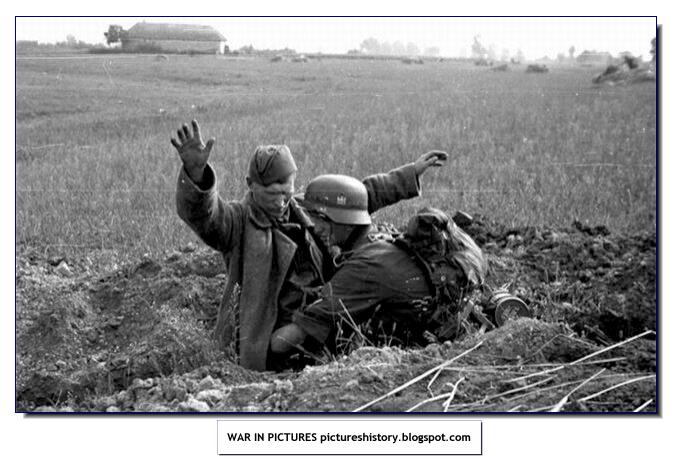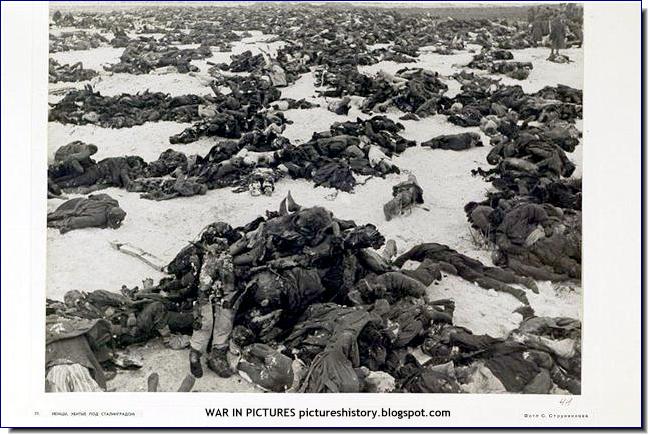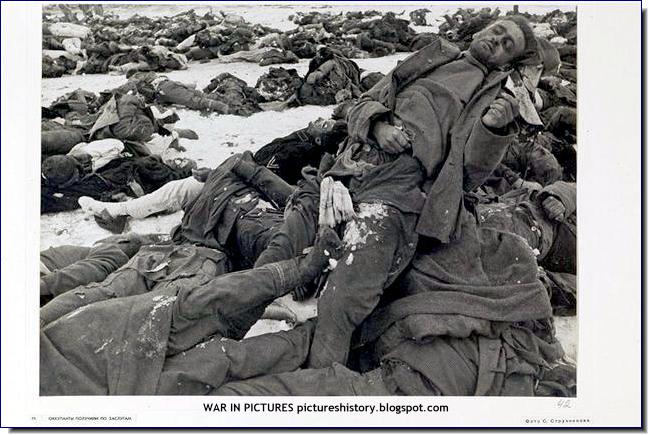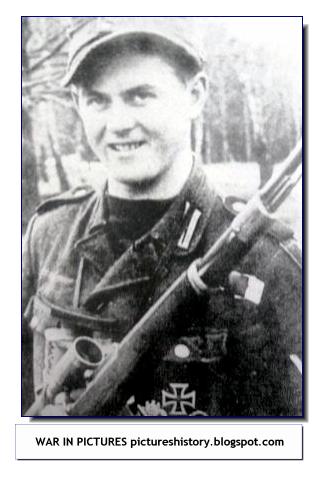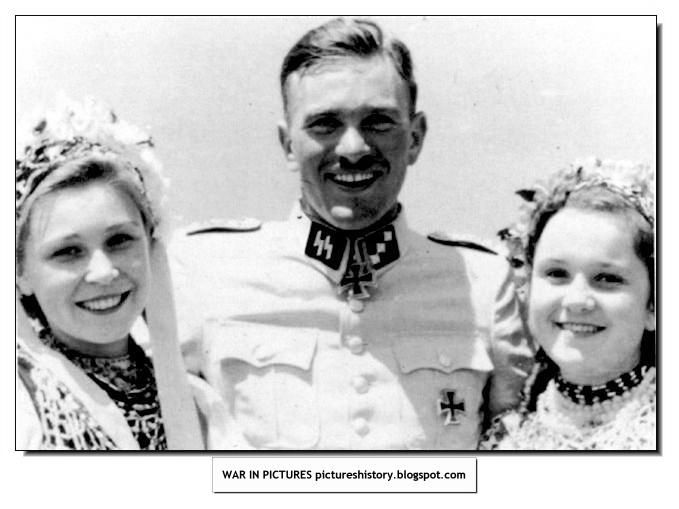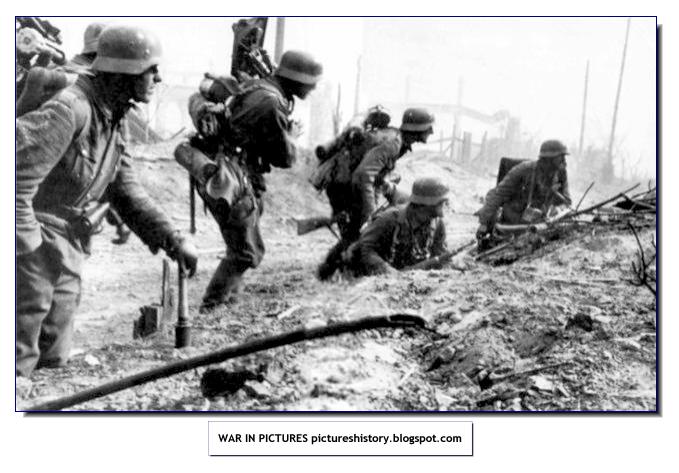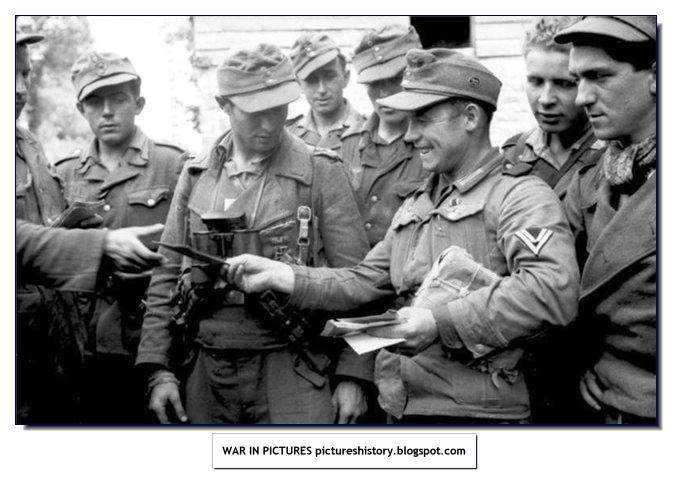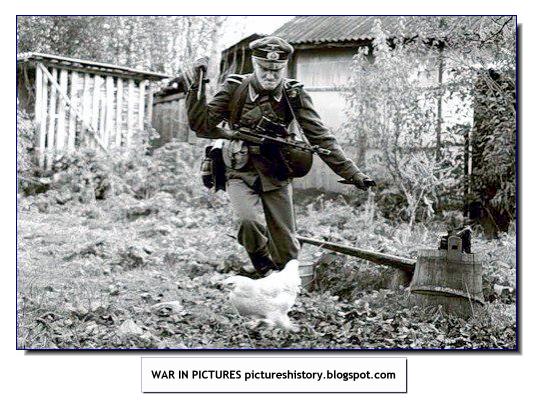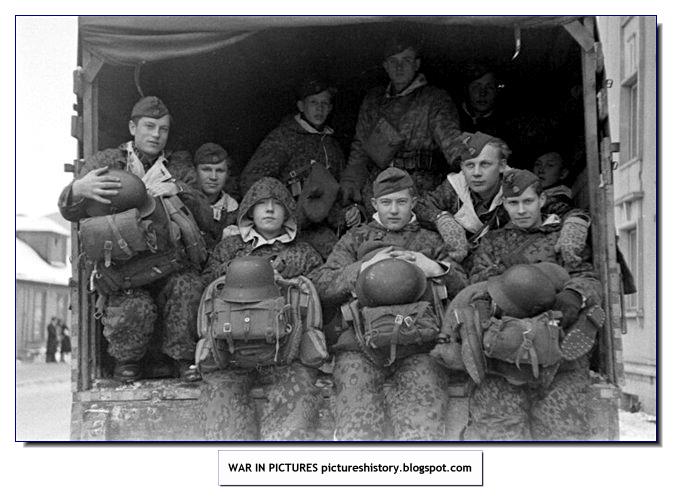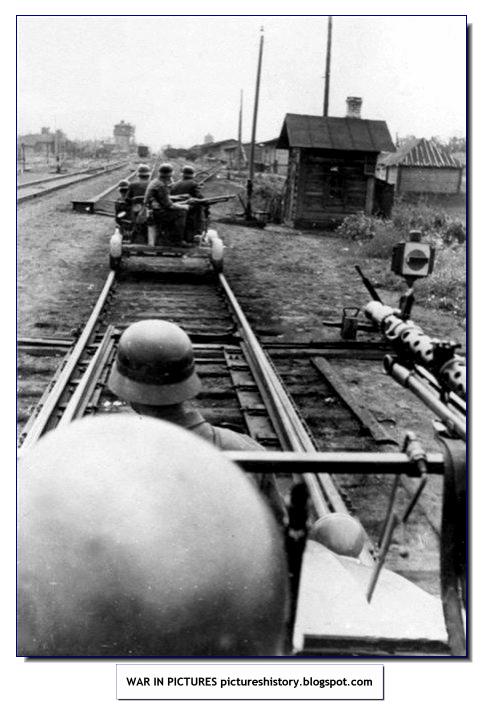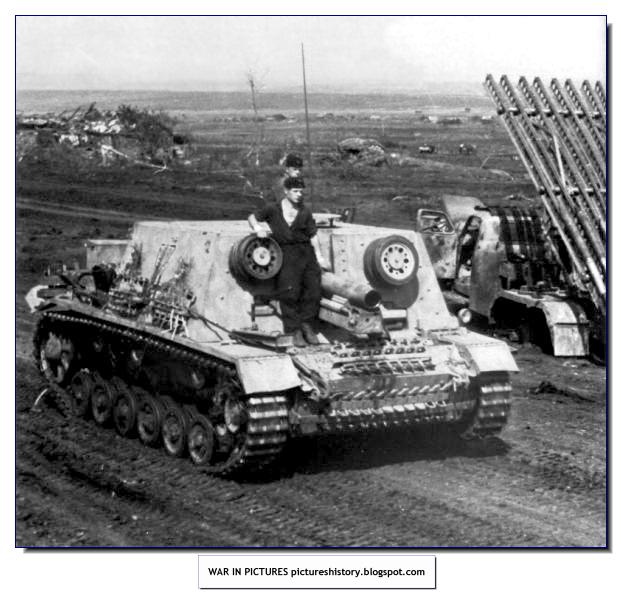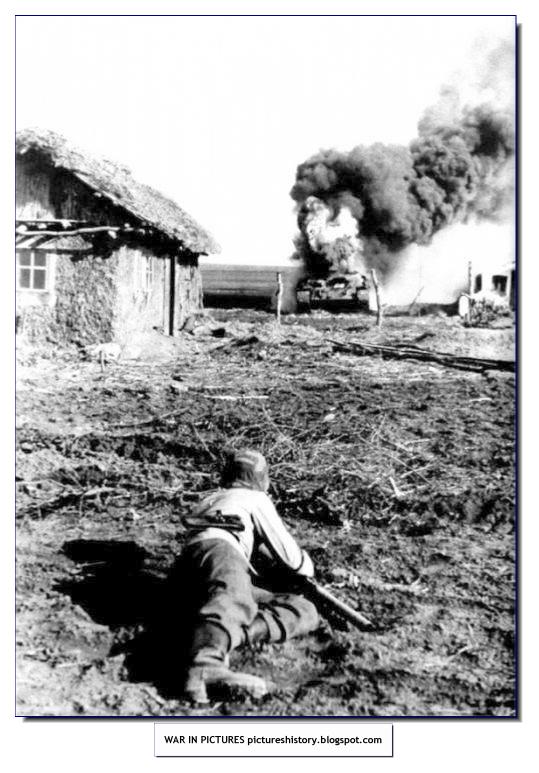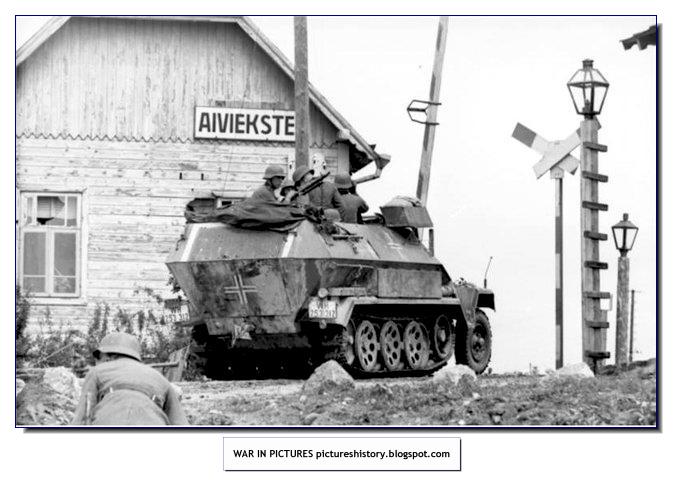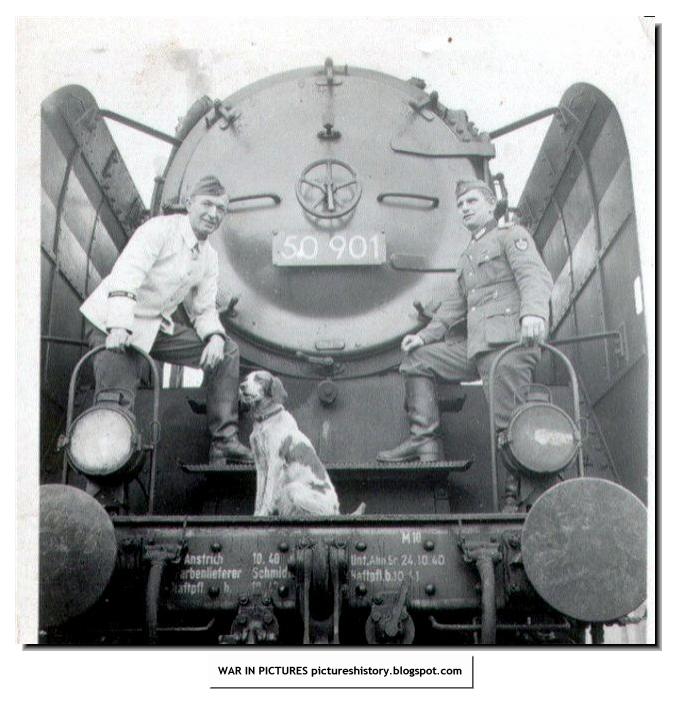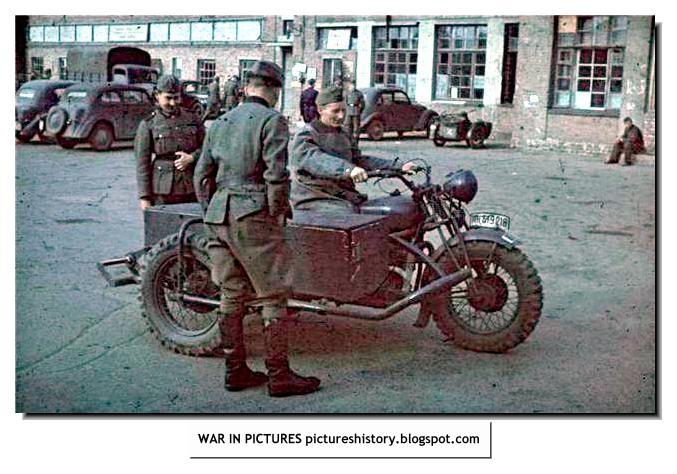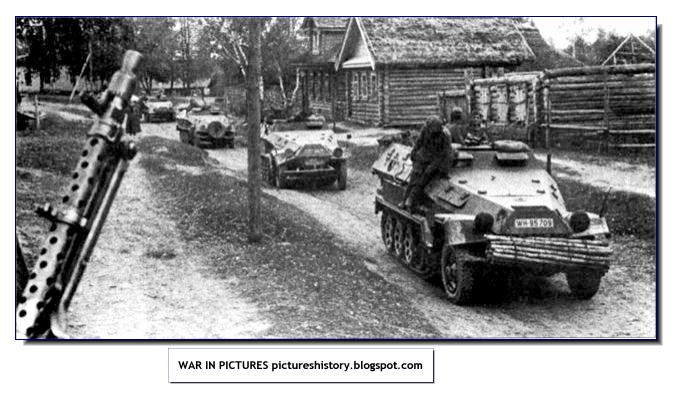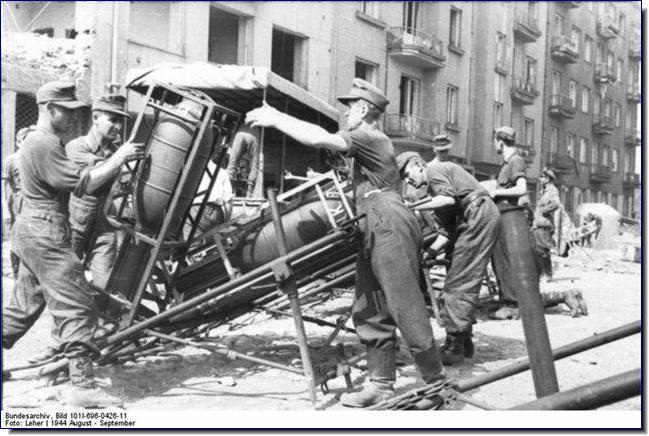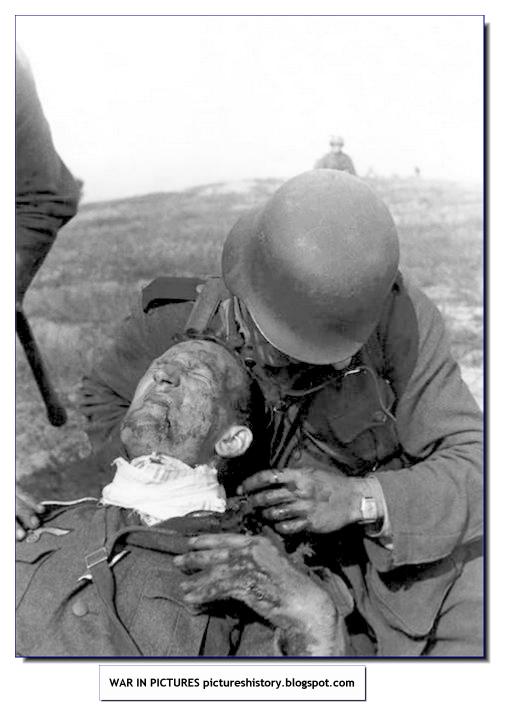Arms for the Volksstum. In the later stages of the war. The Volkssturm got very basic and little arms
APCs from the German 116 Panzer (116.Pz.Div.). In the background - the destroyed remains of an American tank M-10. Area Saint Vith, The Ardennes.
German soldiers with magnetic mines
A German checks out a captured Russian soldier. In 1941
Men of the Das Reich Division with a captured Soviet banner
Dead German soldiers at Stalingrad
Seems like a massacre occurred here in Stalingrad after the Germans lost the town
Germans examines a French tank. 1940. No wonder France was overrun so easily. I mean the tanks look primitive!
A German ambulance at the Eastern Front in late 1941. A lot of bullet-holes
German propaganda pamphlet in occupied Russia
Hitler visits an armament factory
Arnhem Garrison commander Major-General Kussin was killed by men of the 3rd Parachute Battalion as he sped towards his headquarters. It is alleged that the man was scalped and his decorations torn off by British soldiers
Matthäus Hetzenauer (December 23, 1924 in Tyrol, Austria - October 3, 2004) was a German sniper in the 3rd Mountain Division on the Eastern Front of the World War II, who was credited with 345 kills. His longest confirmed kill was reported at 1100 metres.
Hetzenauer trained as a sniper from March 27 through July 16, 1944, before being assigned to the 3rd Gebirgsjäger Division, issued both a K98 rifle with 6x scope and a Gewehr 43 rifle with 4x scope.
On November 6, 1944, he suffered head trauma from artillery fire, and was awarded the Verwundeten-Abzeichen three days later.
On multiple occasions he served with fellow sniper Josef Allerberger. The two of them killed many Soviet soldiers with speed and ease.
Gefreiter Hetzenauer received the Knight's Cross of the Iron Cross on 17 April 1945. Generalleutnant and Divisions commander Paul Klatt had recommended Hetzenauer because of his numerous sniper kills, which in sum defeated two strong enemy companies without fear for his own safety under artillery fire and enemy attacks. This recommendation was approved by General der Gebirgstruppe Karl von Le Suire and General der Panzertruppe Walter Nehring.
Hetzenauer was captured by Soviet troops the following month, and eventually served 5 years of routinely appalling conditions in a Soviet prison camp.
He died on October 3, 2004, after several years of deteriorating health.
A German SS officer with Ukrainian girls
A German assault team prepares to leave for an attack in Stalingrad
Stalingrad again
A shell scooped out a bit of steel from this Tiger tank
A 16 year Volkssturm boy in late 1944
Going to bury a dead comrade
Here is mail!
A car or a boat?
Determined to prepare dinner!
A Russian women gives flowers to German soldiers. Stalin would have foamed at the mouth!
Leningrad is near!
German women give bread to boy soldiers departing for the front
In the last stages of the war a desperate Hitler was sending boys to fight the Soviet army
The industrious Wehramcht used this too for transport!
MORE WEHRMACHT IMAGES
APCs from the German 116 Panzer (116.Pz.Div.). In the background - the destroyed remains of an American tank M-10. Area Saint Vith, The Ardennes.
German soldiers with magnetic mines
A German checks out a captured Russian soldier. In 1941
Men of the Das Reich Division with a captured Soviet banner
Dead German soldiers at Stalingrad
Seems like a massacre occurred here in Stalingrad after the Germans lost the town
Germans examines a French tank. 1940. No wonder France was overrun so easily. I mean the tanks look primitive!
A German ambulance at the Eastern Front in late 1941. A lot of bullet-holes
German propaganda pamphlet in occupied Russia
Hitler visits an armament factory
Arnhem Garrison commander Major-General Kussin was killed by men of the 3rd Parachute Battalion as he sped towards his headquarters. It is alleged that the man was scalped and his decorations torn off by British soldiers
Matthäus Hetzenauer (December 23, 1924 in Tyrol, Austria - October 3, 2004) was a German sniper in the 3rd Mountain Division on the Eastern Front of the World War II, who was credited with 345 kills. His longest confirmed kill was reported at 1100 metres.
Hetzenauer trained as a sniper from March 27 through July 16, 1944, before being assigned to the 3rd Gebirgsjäger Division, issued both a K98 rifle with 6x scope and a Gewehr 43 rifle with 4x scope.
On November 6, 1944, he suffered head trauma from artillery fire, and was awarded the Verwundeten-Abzeichen three days later.
On multiple occasions he served with fellow sniper Josef Allerberger. The two of them killed many Soviet soldiers with speed and ease.
Gefreiter Hetzenauer received the Knight's Cross of the Iron Cross on 17 April 1945. Generalleutnant and Divisions commander Paul Klatt had recommended Hetzenauer because of his numerous sniper kills, which in sum defeated two strong enemy companies without fear for his own safety under artillery fire and enemy attacks. This recommendation was approved by General der Gebirgstruppe Karl von Le Suire and General der Panzertruppe Walter Nehring.
Hetzenauer was captured by Soviet troops the following month, and eventually served 5 years of routinely appalling conditions in a Soviet prison camp.
He died on October 3, 2004, after several years of deteriorating health.
A German SS officer with Ukrainian girls
A German assault team prepares to leave for an attack in Stalingrad
Stalingrad again
A shell scooped out a bit of steel from this Tiger tank
A 16 year Volkssturm boy in late 1944
Going to bury a dead comrade
Here is mail!
A car or a boat?
Determined to prepare dinner!
A Russian women gives flowers to German soldiers. Stalin would have foamed at the mouth!
Leningrad is near!
German women give bread to boy soldiers departing for the front
In the last stages of the war a desperate Hitler was sending boys to fight the Soviet army
The industrious Wehramcht used this too for transport!
MORE WEHRMACHT IMAGES







